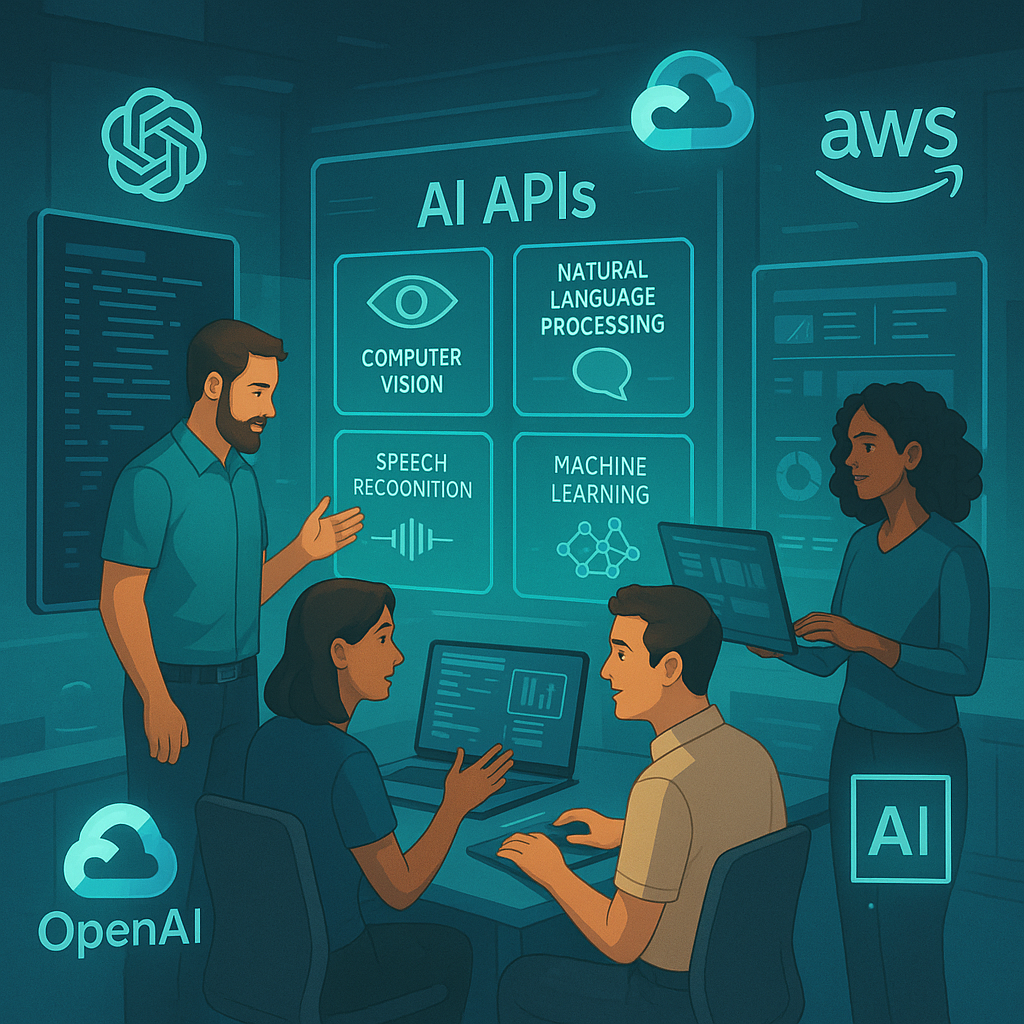We live in a world where people expect software to be smart — whether it’s a chatbot that answers questions, a tool that translates languages, or an app that suggests content based on personal likes. As a developer, building all that from the ground up would take loads of time and resources.
That’s where AI APIs come into play.
These ready-to-use tools let you add clever features to your app, without needing deep AI know-how. In this blog, we’ll check out some of the best AI APIs that can help you build quicker, better, and more powerful applications.
What Is an AI API?
Let’s start with the basics.
An AI API (Application Programming Interface) serves as a bridge between your app and an AI model. You feed it data—such as text, images, or voice recordings—and it returns a smart response.
Here’s what you can do with an AI API:
- Get your app to understand what users say (think chatbots)
- Spot images or faces
- Turn spoken words into written text (and the other way around)
- Switch between languages
- Figure out the mood or purpose behind written words
This saves you the hassle of building and training complex models by yourself.
1. OpenAI API (ChatGPT, GPT-4, Embeddings)
When you want to add chatbots, text generation, summarization, or language understanding to your app, the OpenAI API stands out as a leading option.
- How it helps: It allows you to create apps that communicate like people, produce emails or content, and even make suggestions based on what users ask.
- Interesting tidbit: It’s the engine behind tools like ChatGPT — which shows how powerful it is.
2. Google Cloud AI
Google provides a variety of AI services that cover almost everything — from vision to speech to language.
- Best for: Identifying images, voice input, translating, and natural language tasks.
- Developer-friendly? Yes. Google offers helpful guides and cloud infrastructure that grows with you.
If you’re already using Google’s tools, this makes sense to pick.
3. Microsoft Azure Cognitive Services
Azure’s AI tools help you build apps that can see, hear, talk, and understand.
- Top features: Spotting faces recognizing emotions translating text, and turning speech into text.
- Unique tool: LUIS (Language Understanding) helps apps grasp what users mean when they talk or type.
It’s ideal for big business apps or anything that deals with language or vision.
4. AWS AI Services
Amazon’s AI tools pack a punch and offer many options if you’ve already got your app running on AWS.
- Popular APIs:
- Rekognition – to analyze images and videos
- Comprehend – to make sense of text
- Lex – to build chatbots
- **** – to change text into speech
You get a complete set of tools for voice, image, and language features.
5. Hugging Face API
Hugging Face has gained popularity among AI enthusiasts for sharing open-source models — and now you can tap into them through an API.
- Great to use for: Grouping text turning words from one language to another figuring out if something’s positive or negative, and answering questions.
- Why coders like it: You can test it and add it to any Python program without much fuss.
It’s ideal for projects heavy on natural language processing when you need quick results.
6. IBM Watson
IBM Watson was one of the first big AI systems, and many companies in finance and healthcare still use it today.
- What it gives you:
- Checking the tone of text
- Understanding natural language
- Virtual helpers that can talk
- What makes it special: It has strong security and tools for industries with strict rules.
Watson is a solid choice for serious business applications.
7. Clarifai
Clarifai specializes in image and video recognition through deep learning.
- Good for:
- Face detection
- Object tracking
- Content moderation
- Use case: Ideal for e-commerce social media, or security apps where visuals play a key role.
8. Deepgram
If your app needs to listen and respond to voice, Deepgram stands out as a top pick.
- Best for: Real-time speech-to-text and transcription
- Why it’s awesome: Quick and precise even in loud settings like call centers or meetings.
It’s helpful for voice-enabled products or customer support tools.
How to Choose the Right AI API
Here are some quick pointers to guide your selection:
- Know what you want: What smart feature do you plan to add? Text speech, image, or something different?
- Review costs: Some APIs offer free levels; others bill for each request.
- Examine the docs: Choose an option with clear instructions and that’s easy for developers to use.
- Consider future growth: Ensure the API can support the traffic your app might attract as it expands.
